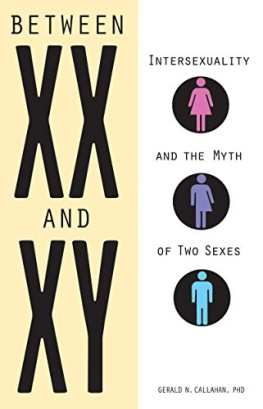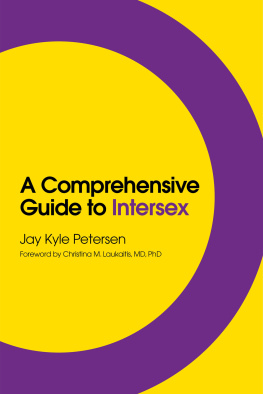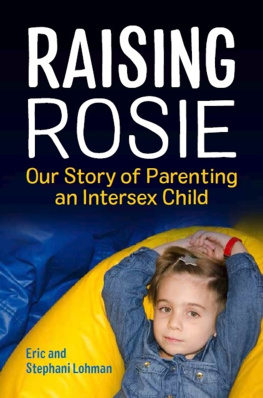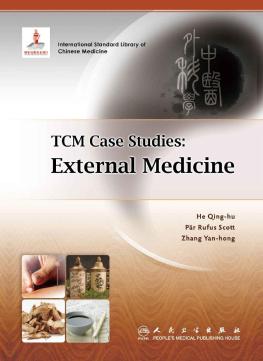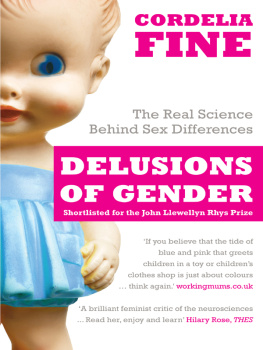Gerald Callahan - Between XX and XY: Intersexuality and the Myth of Two Sexes
Here you can read online Gerald Callahan - Between XX and XY: Intersexuality and the Myth of Two Sexes full text of the book (entire story) in english for free. Download pdf and epub, get meaning, cover and reviews about this ebook. year: 2009, publisher: Chicago Review Press, genre: Romance novel. Description of the work, (preface) as well as reviews are available. Best literature library LitArk.com created for fans of good reading and offers a wide selection of genres:
Romance novel
Science fiction
Adventure
Detective
Science
History
Home and family
Prose
Art
Politics
Computer
Non-fiction
Religion
Business
Children
Humor
Choose a favorite category and find really read worthwhile books. Enjoy immersion in the world of imagination, feel the emotions of the characters or learn something new for yourself, make an fascinating discovery.
- Book:Between XX and XY: Intersexuality and the Myth of Two Sexes
- Author:
- Publisher:Chicago Review Press
- Genre:
- Year:2009
- Rating:4 / 5
- Favourites:Add to favourites
- Your mark:
Between XX and XY: Intersexuality and the Myth of Two Sexes: summary, description and annotation
We offer to read an annotation, description, summary or preface (depends on what the author of the book "Between XX and XY: Intersexuality and the Myth of Two Sexes" wrote himself). If you haven't found the necessary information about the book — write in the comments, we will try to find it.
Providing a fascinating look at the science of sex and what makes people male or female, this book explains dozens of intersex conditionssuch as hermaphroditism, Klinefelter syndrome, and androgen insensitivity syndromeand includes personal interviews with people living with these conditions telling their surprising and often heart-wrenching stories. Even doctors and scientists are not entirely sure if external genitalia, internal sex organs, chromosomes, DNA, environment, or some combination define a persons sex, but this examination shows that sex is not an either-or proposition: not girl/boy, XX/XYthere are babies born XYY, XXX, or with any dozen or more known variations in the X or Y chromosomes. The history and the current treatment for intersex conditions as well as the options that are available today for the ambiguous child are covered in this captivating account that truly shows what it means to be human.
**
From Publishers WeeklyCombining passion with current scientific information, Callahan, an immunologist/pathologist at Colorado State University, explains why our conception of two sexes is more a social than a biological construct. He argues that there are no simple, foolproof ways to determine sex. For example chromosomal structure, XX for females and XY for males, is not fully predictive because of various genetic disorders that can play a larger role. Similarly, genitalia can be quite varied and represent a continuum of difference rather than two discrete points. Callahan does a good job of exploring intersex individuals, who are neither male nor female, and argues that they need to be accepted for what they are and not viewed as defective. Further, he provides provocative evidence that surgical gender reconstruction is often unsuccessful. Although Callahan attempts to make the case that some non-Western societies have a less bipolar view of gender, his abbreviated presentation is not very convincing. He is, however, persuasive that better understanding of and respect for sex and gender variability would be far healthier for the 65,000-plus intersex people born each year and society in general. (July)
Copyright Reed Business Information, a division of Reed Elsevier Inc. All rights reserved.
Callahan does a good job of exploring intersex individuals, who are neither male nor female, and argues that they need to be accepted for what they are and not viewed as defective. Publishers Weekly
Immunologist Callahan takes a fascinating look at the biology and human experience of intersexuality, a state in between male and female. Discover Magazine
Callahans writing style is both accessible and engaging; it reads more like creative non-fiction, a la Malcolm Gladwell. Ms. Magazine
This is a fascinating, easily understandable journey into why we are born male or female and examines our age-old obsession with sex. Fort Collins Coloradoan
There are lots of interesting nuggets herefor example, Callahans description of biological sex as a spectrum, not a binary system. Double X
The book is really beautifully written, highly accessible, and visionary in its own right. Feministing
This book takes readers through an alphabet of gender and gender variations. Callahan shows readers that rather than either/or scenarios, there have always been variations; his book shatters our societys take on pink and blue. Advocate.com
Gerald Callahan: author's other books
Who wrote Between XX and XY: Intersexuality and the Myth of Two Sexes? Find out the surname, the name of the author of the book and a list of all author's works by series.

